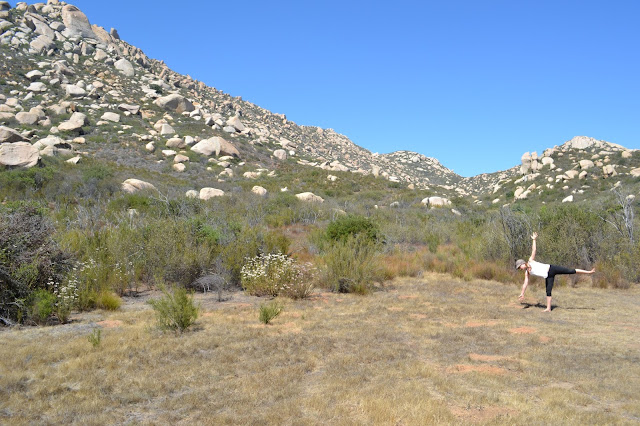Shamatha-Vipashyana meditation: Attention on the out-breath.
It's been an emotional winter season for me. And it is in times like these, that I am grateful for my meditation practice. I am reading Pema Chodron's When Things Fall Apart: Heart Advice for Difficult Times. In her book, Chodron shares meditation techniques and tremendous insight into the lessons we can learn from difficult times.
The Buddha said that a person can meditate at any time and all the time. One can meditate while walking, sitting, standing, or eating by completing tasks mindfully and cultivating awareness in daily life. But we can not bring objective awareness into our actions if at first we do not have a safe place to start. A formal seated meditation practice can be that place for us.
As Chodron explains, the cushion is "the safest and most nurturing place" to practice neither indulging in nor repressing our emotions. It is on the cushion where we can learn how to just be with strong emotions like anger. I have found that sitting each morning on my cushion has enabled me to be loving and available to my family during these difficult times.
Chodron shares a technique called shamatha-vipashyana meditation that her teacher Trungpa Ripoche taught her. I've been practicing this technique lately and will do my bed to relay it to you :)
First, find a comfortable seated position. Sit on a cushion or blanket(s) so your hips are above your knees. Sit with your back straight (you can sit against a wall). Hands can be at your knees of together in your lap. Try not to make any sudden movements. If you need to move do so slowly and with awareness.
For shamatha-vipashyana meditation, put very light attention on the out-breath. The out-breath is your object of meditation - something you return to again and again no matter what's going on in your life. It should just be an ordinary out-breath, not manipulated in any way, and the attention should be soft, a sort of touch-and-go approach. About 25 percent of the attention should be on the breath, so that one was still aware of one's surrounding and doesn't consider them an intrusion or obstacle to meditation (p. 18-19).
Next, label your thoughts as "thinking." When you catch your mind wandering away from your focus point or indulging in fantasies, stop the train of thought and say to yourself "thinking." Say this without making it a big deal, and then, return to your out-breath.
Remember that meditation is about "opening up and relaxing with whatever arises, without picking and choosing" (p. 21). So if your like me (or most people for that matter) even if the dirtiest, nastiest thoughts come up, give yourself a break from guilt and shame, and use the practice to cultivate gentleness and a nonjudgmental attitude.
Try practicing shamatha-vipashyana meditation for 10-20 minutes a day. Take notice of the effects it has on you, and record your emotions, actions, feelings, and daily life in a journal. And I invite you to share your experience with me!
Namaste*
The Buddha said that a person can meditate at any time and all the time. One can meditate while walking, sitting, standing, or eating by completing tasks mindfully and cultivating awareness in daily life. But we can not bring objective awareness into our actions if at first we do not have a safe place to start. A formal seated meditation practice can be that place for us.
As Chodron explains, the cushion is "the safest and most nurturing place" to practice neither indulging in nor repressing our emotions. It is on the cushion where we can learn how to just be with strong emotions like anger. I have found that sitting each morning on my cushion has enabled me to be loving and available to my family during these difficult times.
Chodron shares a technique called shamatha-vipashyana meditation that her teacher Trungpa Ripoche taught her. I've been practicing this technique lately and will do my bed to relay it to you :)
First, find a comfortable seated position. Sit on a cushion or blanket(s) so your hips are above your knees. Sit with your back straight (you can sit against a wall). Hands can be at your knees of together in your lap. Try not to make any sudden movements. If you need to move do so slowly and with awareness.
For shamatha-vipashyana meditation, put very light attention on the out-breath. The out-breath is your object of meditation - something you return to again and again no matter what's going on in your life. It should just be an ordinary out-breath, not manipulated in any way, and the attention should be soft, a sort of touch-and-go approach. About 25 percent of the attention should be on the breath, so that one was still aware of one's surrounding and doesn't consider them an intrusion or obstacle to meditation (p. 18-19).
Next, label your thoughts as "thinking." When you catch your mind wandering away from your focus point or indulging in fantasies, stop the train of thought and say to yourself "thinking." Say this without making it a big deal, and then, return to your out-breath.
Remember that meditation is about "opening up and relaxing with whatever arises, without picking and choosing" (p. 21). So if your like me (or most people for that matter) even if the dirtiest, nastiest thoughts come up, give yourself a break from guilt and shame, and use the practice to cultivate gentleness and a nonjudgmental attitude.
Try practicing shamatha-vipashyana meditation for 10-20 minutes a day. Take notice of the effects it has on you, and record your emotions, actions, feelings, and daily life in a journal. And I invite you to share your experience with me!
Namaste*



Comments
Post a Comment